|
|
The
Great Tradition of Gurus
World has produced lot of masters in its course. The endaevour at School
of Vedanta is to make these master more known and to understand their
works.
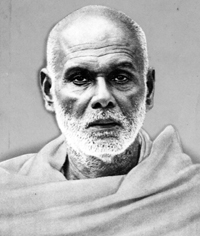 |
Sree
Narayana Guru - 1856-1928
Sree Narayana Guru, considered by many a saint and reformer, led a quiet but significant social revolution. A champion of the humble and the downtrodden, he gave the watchwords : "One Caste, One Religion, One God for all men."
To Indians, the word Guru (Teacher) is a very sacred one. It has many meanings. It may mean that which is weighty and valuable; it may mean that which is worthy of honour; it may also mean that which dispels ignorance. The word with its several meanings is known in several countries of the world, in one form or the other, both in education and in religion.
|
| |
|
|
| |
|
| |
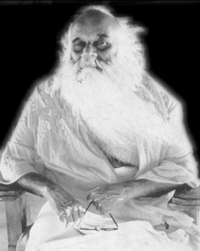 |
NATARAJAGURU:
The prime disciple and interpreter of SriNarayanaGuru to world. Dr.P Natarajan did Masters in Zoology and D. Litt in Educational Psychology from Sorbonne University, Paris. He had worked as Faculty in many European Universities before renouncing and adopting this new name NatarajaGuru as a Sanyasin. He established the Narayana Gurukulam in Varkala and many other places to impart quality education in unitive god philosophy, in ‘stay-in-study ashram’ style.
Prominent English works of NatarajaGuru are :
Autobiography of an Absolutist, An integrated science of the Absolute, Life and Teachings of Narayana Guru, Memorandum on World Government, Sankara’s Saundarya Lahari(commentary), The Bhagavd Gita (commentary), The Philosophy of a Guru, The Search for a Norm in Western Thought, Towards A One World Economics, Vedanta Revalued and Restated, Wisdom- The Absolute is Adorable, World Education Manifesto, Man-woman Dialectics, Experiencing One World, The Word of the Guru.
|
| |
|
|
| |
|
| |
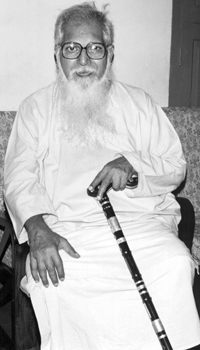 |
Guru
Nitya Chaitanya Yati: 1923 - 1999
He was born in vakayar, near Konni, Pathanamthitta (district),Kerala, India, as the first son to Pandalam Raghava Panicker, a poet & Vamakshi Amma. His original name was Jayachandran Panicker. He has one brother late Mr.Balacnhadra Panicker and 3 sisters Mrs.Subhashini Amma, Late Enakshi Amma (passed before completing 1 yr old) and Dr. Sumangala Amma.
In 1951, he accepted Nataraja Guru as his spiritual preceptor and after Nataraja Guru died, Yati became the Head of Narayana Gurukula. As Narayana Gurukula is a world community, Yati had to liaison between all members of the Gurukula at an interpersonal level in the teacher-student context and to make the Gurukula work in unison.
Nitya Chaitanya Yati published over 120 books in Malayalam and 80 books in English, as well as a number of articles on philosophy, psychology, social ethics and aesthetics. He was the founder-chairperson of the East-West University of Brahmavidya. He also worked as the Commissioner for World Education and as a sponsor of the World Government of World Citizens. World citizenship is a unique concept that Yati tried to give life to, in his own words:
"The term 'world citizen' can be better understood with a negative definition than with a positive one. If a citizen of a state with political frontiers is expected to pay allegiance to the government of the state to which he or she belongs and is expected to take arms against aliens who might invade the territory of the state, a world citizen recognizes the entire world as one's state and in principle does not recognize any member of one's own species as an alien to the world community to which oneself belongs. Such a person recognizes the earth as one's sustaining mother, the innate inviolable laws of nature as one's protecting father, all sentient beings as one's homes.
|
| |
|
|
| |
|
| |
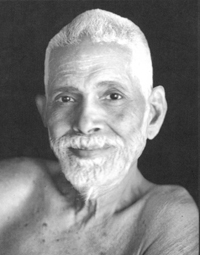 |
Bhagavan Sri Ramana Maharshi: 30th Dec 1879 to 14th April 1950
Throughout the history of mankind spiritual giants have appeared on very rare occasions to exemplify the Highest Truth. Guiding followers by their conduct in every moment of their lives; Bhagavan Sri Ramana Maharshi was such a giant. Unique in our time, He perfectly embodied the ultimate truth of Self-realisation, or complete absorption in the Supreme Itself.
Drawn from His home by the power of Arunachala at the age of sixteen, he remained at Its feet throughout the rest of His life and became known as the Sage of Arunachala.
He wrote very little, but is known to have translated and corrected a number of important works for the benefit of devotees. He preferred to communicate through the power of overwhelming Silence, a silence so deep and powerful that it stilled the minds of ardent seekers who were attracted to Him from all over the world.
Although preferring silence, He was always willing to answer the questions of sincere aspirants and never failed to guide them in the right direction.
His highest teaching of 'Self-enquiry' (vichara) was understood in the infinite silence of his presence. Through this silence, countless numbers of devotees and visitors experienced the pure bliss of True Being. That same experience of perfect peace is still available to sincere souls who turn to him and practice his teachings with devotion.
|
| |
|
|
| |
|
| |
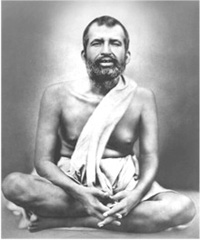 |
SRI RAMAKRISHNA
[1836-1886]
Sri Ramakrishna, who was born in 1836 and passed away in 1886, represents the very core of the spiritual realizations of the seers and sages of India. His whole life was literally an uninterrupted contemplation of God. He reached a depth of God-consciousness that transcends all time and place and has a universal appeal. Seekers of God of all religions feel irresistibly drawn to his life and teachings. Sri Ramakrishna, as a silent force, influences the spiritual thought currents of our time. He is a figure of recent history and his life and teachings have not yet been obscured by loving legends and doubtful myths. Through his God-intoxicated life Sri Ramakrishna proved that the revelation of God takes place at all times and that God-realization is not the monopoly of any particular age, country, or people. In him, deepest spirituality and broadest catholicity stood side by side. The God-man of nineteenth-century India did not found any cult, nor did he show a new path to salvation. His message was his God-consciousness. When God-consciousness falls short, traditions become dogmatic and oppressive and religious teachings lose their transforming power.
|
| |
|
|
| |
|
| |
 |
Gautama Buddha
Siddhartha Gautama, in Sanskrit, or Siddhattha Gotama, in Pali, was a spiritual teacher from ancient India and the founder of Buddhism. He is generally recognized by Buddhists as the Supreme Buddha (Sammāsambuddha) of our age.
In general, ‘Buddha’ means ‘Awakened One’, someone who has awakened from the sleep of ignorance and sees things as they really are. A Buddha is a person who is completely free from all faults and mental obstructions. There are many people who have become Buddhas in the past, and many people will become Buddhas in the future….There is nothing that Buddha does not know. Because he has awakened from the sleep of ignorance and has removed all obstructions from his mind, he knows everything of the past, present, and future, directly and simultaneously. Moreover, Buddha has great compassion which is completely impartial, embracing all living beings without discrimination.
He benefits all living beings without exception by emanating various forms throughout the universe, and by bestowing his blessings on their minds. Through receiving Buddha’s blessings, all being, even the lowliest animals, sometimes develop peaceful and virtuous states of mind. Eventually, through meeting an emanation of Buddha in the form of a Spiritual Guide, everyone will have the opportunity to enter the path to liberation and enlightenment. As the great Indian Buddhist scholar Nagarjuna said, there is no one who has not received help from Buddha.
|
| |
|
|
| |
|

